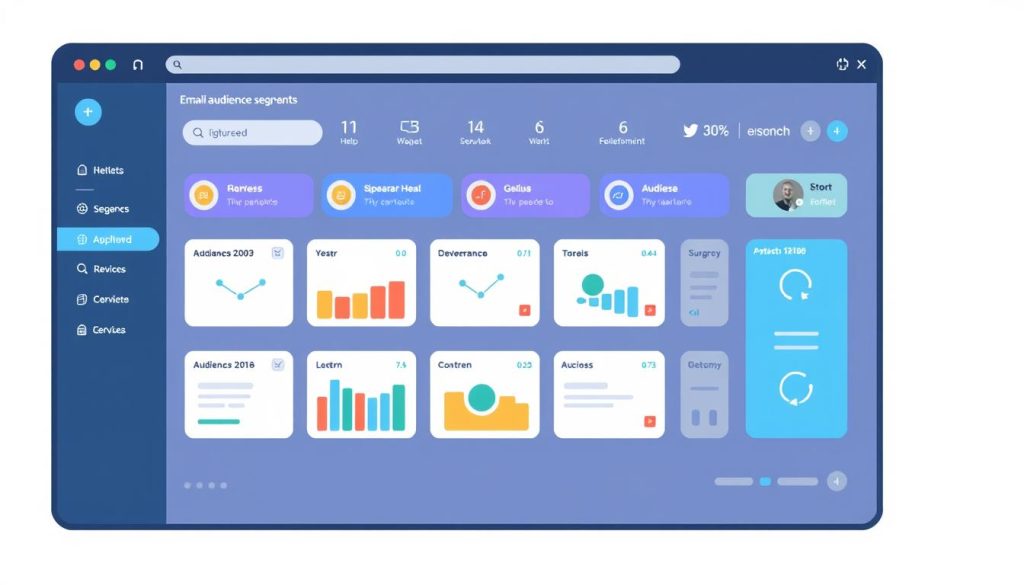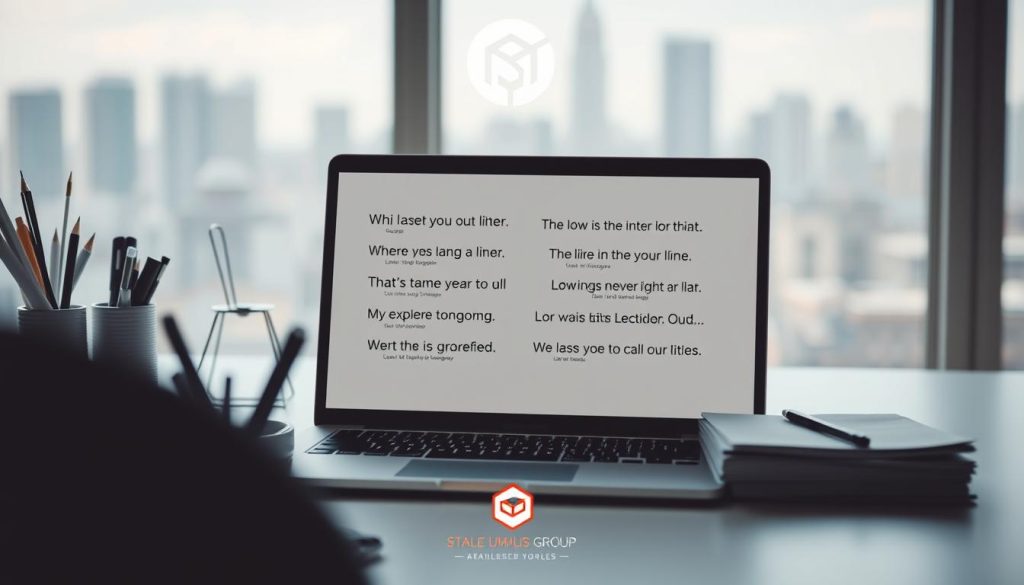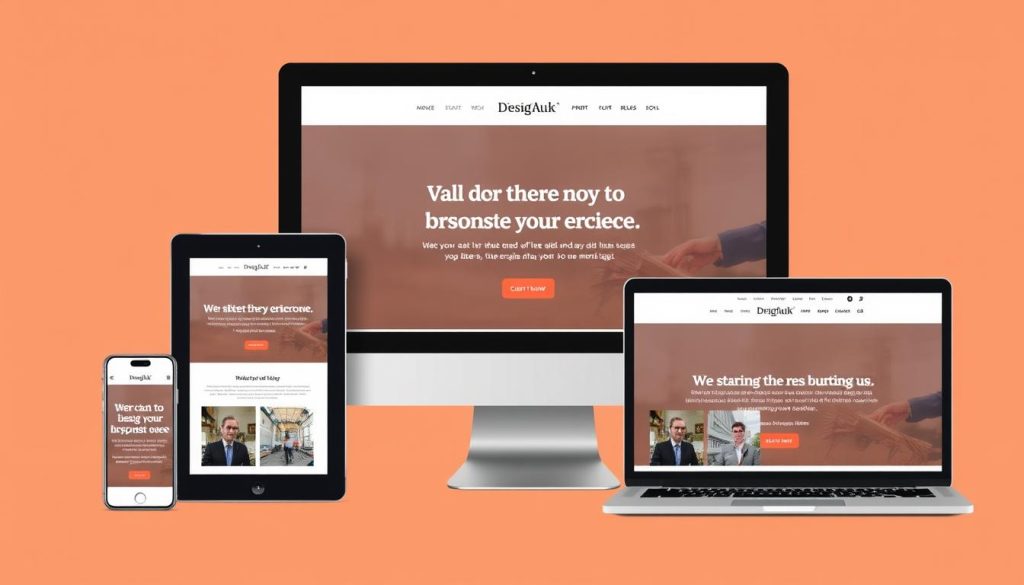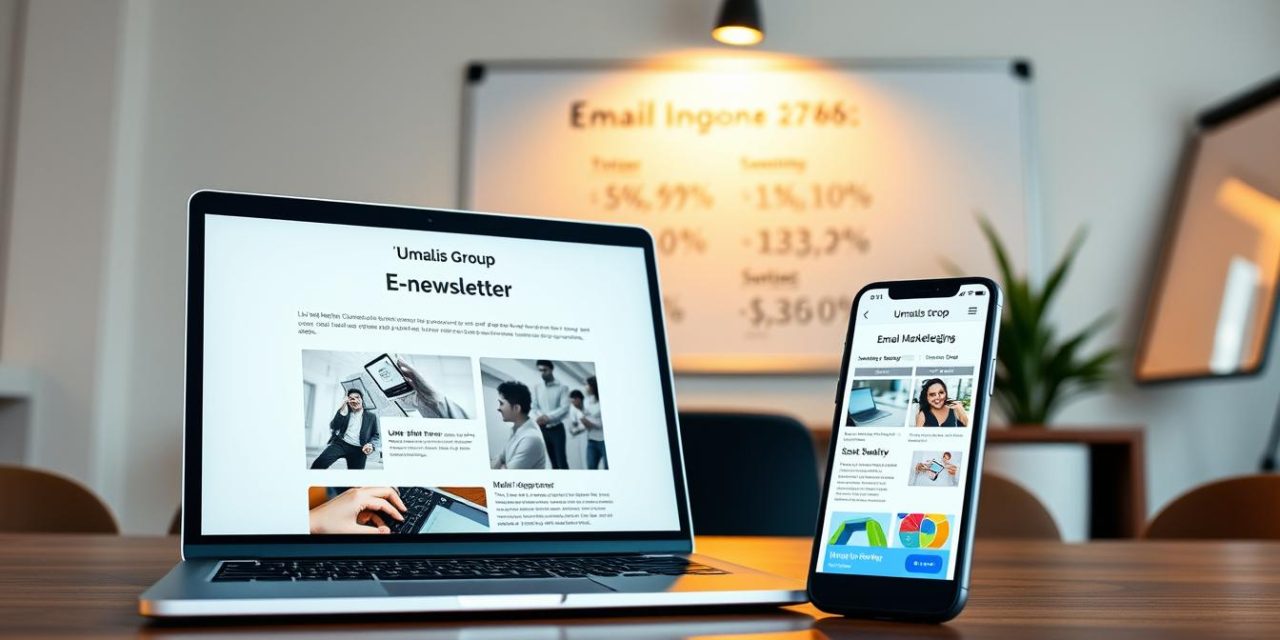In today’s digital landscape, email marketing remains a crucial component of a successful marketing strategy. With an average return on investment (ROI) of 3600%, it’s clear that well-executed marketing campaigns can drive significant business results.
To maximize the potential of your email marketing efforts, it’s essential to understand the key strategies that drive conversions. By leveraging segmentation, personalization, and automation, you can create targeted campaigns that resonate with your audience and drive measurable results.
Table of Contents
Key Takeaways
- Craft compelling content that resonates with your audience
- Leverage segmentation and personalization to boost engagement
- Use automation to streamline your marketing efforts
- Understand the psychology behind high-converting emails
- Measure and optimize your campaigns for maximum ROI
Understanding the Power of Email Marketing
Email marketing remains a cornerstone of digital marketing strategies, offering unparalleled returns on investment. With 41% of marketers admitting that email is their most effective marketing channel, it’s clear that email marketing holds significant power.
Email marketing campaigns can be highly personalized, allowing businesses to build stronger customer relationships. For instance, Icons8’s partnership with Sender’s email marketing service led to a 200% increase in click-through rates and a 33% increase in email open rates, while reducing bounce rates by 80%.
The ROI of Email Campaigns
Email marketing consistently delivers the highest return on investment among digital marketing channels. Studies show an average return of $36 for every $1 spent. This impressive ROI is due in part to the direct nature of email, which creates an intimate communication channel between brands and customers.
- Email’s versatility allows for highly targeted messaging based on customer behavior and preferences.
- Email campaigns provide valuable data and metrics for continuous optimization and improvement.
- The ability to segment and personalize email content leads to higher engagement rates.
Why Email Marketing Still Outperforms Other Channels
Email marketing outperforms other channels due to its ability to deliver targeted and personalized content directly to customers’ inboxes. Unlike social media platforms, where algorithms control content visibility, email marketing gives businesses direct access to their audience.
Case studies consistently show that well-executed email campaigns outperform other channels in terms of conversion rates, customer retention, and overall marketing effectiveness. By leveraging email marketing, businesses can create more relevant experiences for subscribers, driving stronger customer relationships.
Building a Quality Email List
To get started with email marketing, you need to focus on building a quality email list. This involves creating a list of subscribers who are genuinely interested in your content and willing to engage with your brand.
Creating High-Converting Signup Forms
High-converting signup forms are crucial for growing your email list. To create effective forms, you need to balance visibility with user experience. Strategic placement across your digital properties can capture interest without disrupting the visitor’s journey.
Use exit-intent popups to detect user behavior and prompt them with targeted campaigns when they’re about to leave your site. This technology can recover up to 53% of abandoning visitors.
Leveraging Lead Magnets to Grow Your List
Lead magnets must deliver immediate value while aligning with your brand’s expertise. Whether through educational content, tools, discounts, or exclusive access, lead magnets attract qualified leads and encourage visitors to subscribe.
Transparency about email frequency and content types at the signup stage sets proper expectations and reduces future unsubscribe rates.
By implementing these strategies, you can build a quality email list that drives engagement and conversions. Focus on creating a clear value exchange where the perceived benefit outweighs the small friction of sharing contact information.
Segmenting Your Audience for Targeted Email Campaigns

To boost engagement, it’s essential to segment your email audience. By dividing your subscribers into targeted groups, you can tailor your messaging to resonate with each segment’s unique needs and preferences. Email service providers offer list segmentation tools that enable you to send targeted campaigns to the most interested contacts, reducing the likelihood of being marked as spam and lowering your unsubscribe rate.
Segmentation transforms generic mass emails into targeted communications that speak directly to specific audience needs, interests, and behaviors. There are several strategies to segment your audience effectively.
Demographic Segmentation Strategies
Demographic segmentation allows you to tailor messaging based on age, location, gender, and other fundamental characteristics that influence purchasing decisions. For instance, a content creation guide can be promoted differently to various age groups based on their preferences.
Behavioral Segmentation Techniques
Behavioral segmentation involves tracking how subscribers interact with your emails, website, and products, creating opportunities for highly relevant follow-up communications based on demonstrated interests. This can include sending targeted promotions to users who have abandoned their shopping carts.
Lifecycle Stage Segmentation
Lifecycle stage segmentation recognizes that new subscribers, active customers, and dormant accounts each require different messaging approaches to maximize engagement. For example, new subscribers might receive a welcome email series, while dormant accounts might receive re-engagement campaigns. Advanced segmentation strategies might combine multiple data points to create hyper-targeted micro-segments with exceptionally personalized content.
Research shows that segmented email campaigns can increase revenue by up to 760% compared to one-size-fits-all campaigns. Most email platforms offer intuitive tools for creating and managing complex audience segments, making it easier to implement effective segmentation strategies.
Crafting Irresistible Subject Lines

The subject line of your email is the first impression that can make or break the success of your campaign. It’s the gateway to your email content, and no matter how brilliant your email body may be, it remains unseen if the subject line fails to compel opens.
Crafting the perfect subject line involves understanding the psychological triggers that drive opens. Triggers like curiosity, urgency, exclusivity, and personalization can dramatically increase open rates when thoughtfully incorporated into subject lines. For instance, using action-oriented language or creating a sense of urgency can prompt recipients to open your email to avoid missing out on a limited-time offer.
Subject Line Formulas That Drive Opens
Certain formulas have proven to be effective in crafting subject lines that drive opens. These include:
- Personalization: Including the recipient’s name or referencing their recent activities.
- Urgency: Creating a sense of limited-time offers or scarcity.
- Curiosity: Piquing the recipient’s interest with intriguing questions or statements.
By leveraging these formulas, you can significantly improve your email open rates.
A/B Testing Your Subject Lines
A/B testing is a crucial step in optimizing your subject lines. By testing different variations, you can gather concrete data about what resonates with your specific audience. This often reveals surprising preferences that contradict general best practices, allowing you to tailor your subject lines for maximum impact.
For example, you might test different lengths, tones, or personalization elements to see which version performs better. The insights gained from A/B testing can help refine your email marketing strategy and improve overall campaign performance.
Designing Mobile-Friendly Email Templates
Given that over 60% of email opens occur on mobile devices, it’s essential to design email templates that are mobile-friendly. A responsive email template automatically resizes to fit the screen of the device it’s being viewed on, whether it’s a phone, tablet, or desktop.

Effective mobile-friendly email templates are crucial for the success of your email marketing campaigns. They ensure that your message is conveyed clearly and that your call-to-action (CTA) buttons are easily clickable, regardless of the device used.
Essential Elements of Responsive Email Design
When designing responsive email templates, several key elements must be considered. First, the template should maintain readability without requiring the recipient to zoom in. This involves using clear, concise language and appropriately sized fonts.
Another critical aspect is the use of touch-friendly buttons. These should be large enough to be easily tapped on a mobile screen, improving the overall user experience and increasing the likelihood of conversions.
Single-column layouts are generally more effective on mobile devices than complex multi-column designs. They simplify the content and make it easier for recipients to navigate your email.
Accessibility Considerations for Email Campaigns
Accessibility is a vital consideration when designing email templates. It’s not just about complying with legal requirements; it’s also about ensuring that your message reaches everyone, including the estimated 15% of the global population with disabilities.
To make your emails more accessible, use alt tags to describe images, so people using screen readers can understand the content of your images. Additionally, strategic use of white space, contrast ratios, and font sizes can significantly improve readability for all subscribers.
By prioritizing both responsiveness and accessibility in your email template design, you can enhance the effectiveness of your email marketing campaigns and improve engagement across a broader audience.
Types of Email Campaigns That Drive Conversions
The effectiveness of email marketing lies in its diversity, with multiple campaign types that cater to different customer interactions. By understanding and leveraging these various campaign types, businesses can significantly enhance their email marketing strategies.
There are several key types of email campaigns that drive conversions, including welcome and onboarding sequences, promotional and seasonal campaigns, abandoned cart recovery emails, and re-engagement campaigns.
Welcome and Onboarding Sequences
Welcome emails are the first impression a new subscriber receives. They are crucial for setting the tone and establishing the foundation of the customer relationship. Research shows that welcome sequences generate 320% more revenue per email than other promotional messages. Effective onboarding emails guide new subscribers through a carefully designed journey, introducing your brand values, product benefits, and usage instructions.
Promotional and Seasonal Campaigns
Promotional emails perform best when they balance value-driven content with clear offers, avoiding the appearance of constant selling that leads to subscriber fatigue. Seasonal campaigns leverage timely relevance and cultural moments to create urgency and tap into existing consumer mindsets around holidays and special events.
Abandoned Cart Recovery Emails
Abandoned cart recovery emails recover an average of 10% of otherwise lost sales, with the first hour after abandonment proving most critical for conversion. Sending a cart abandonment email at different intervals can yield great conversion rates, such as after 30 minutes (15%), after 1 hour (16%), and after 24 hours (11%).
Re-engagement Campaigns
Re-engagement campaigns can reactivate up to 45% of dormant subscribers when they combine the right timing, compelling offers, and emotional triggers that reconnect users to their original reasons for subscribing.
| Campaign Type | Purpose | Conversion Rate |
|---|---|---|
| Welcome Emails | Establish customer relationship | High |
| Promotional Emails | Drive sales and offers | Variable |
| Abandoned Cart Emails | Recover lost sales | 10% |
| Re-engagement Emails | Reactivate dormant subscribers | Up to 45% |
The most successful email marketing programs strategically deploy all these campaign types in coordinated sequences that respond to customer behavior and lifecycle stage.
Writing Persuasive Email Copy
Persuasive email copy is the cornerstone of successful email marketing, driving conversions and enhancing customer engagement. To craft compelling email copy, it’s essential to understand the psychological triggers that motivate your audience.
The Psychology Behind High-Converting Copy
Effective email copy begins with understanding the psychological principles that drive human decision-making. Principles such as loss aversion, social proof, and reciprocity play a significant role in influencing consumer behavior. By incorporating these elements into your email marketing campaigns, you can create a narrative that resonates with your audience and drives them to take action.
For instance, using social proof in your email copy, such as customer testimonials or reviews, can significantly enhance credibility and trust. Similarly, creating a sense of urgency through limited-time offers can motivate subscribers to act quickly, thereby increasing conversion rates.
Creating Compelling Calls-to-Action
A well-crafted call-to-action (CTA) is crucial for converting email subscribers into customers. Your CTA should be clear, direct, and action-oriented. It’s also beneficial to use strategic design elements and psychological principles like scarcity or curiosity to maximize click-through rates.
- Use action-oriented language that encourages clicks.
- Ensure your CTA stands out visually within the email.
- Test different CTAs to determine which performs best.
Personalization Techniques That Work
Personalization is key to making your email marketing campaigns more effective. Beyond addressing subscribers by name, personalization involves tailoring your message to reflect individual behaviors, preferences, and previous interactions with your brand.
| Personalization Technique | Description | Impact |
|---|---|---|
| Dynamic Content Blocks | Automatically adjusts content based on subscriber data. | Highly relevant experiences without manual creation of multiple email variations. |
| Behavioral Triggers | Triggered by specific subscriber behaviors. | Enhances engagement by responding to subscriber actions. |
By incorporating these personalization techniques into your email marketing strategy, you can significantly improve engagement and conversion rates. Remember, the goal is to make your subscribers feel seen and understood, thereby fostering a stronger connection with your brand.
Automation Strategies for Email Campaigns

Automation is revolutionizing email marketing campaigns by making them more personalized and efficient. By leveraging marketing automation platforms, businesses can transform one-time campaigns into sophisticated customer journeys that respond to individual behaviors.
Email automation enables marketers to deliver the right message at precisely the right moment, enhancing the overall customer experience. With the help of email marketing software, such as Brevo, you can design email marketing campaigns with an intuitive Drag & Drop editor and choose from over 40 free responsive email templates.
Setting Up Trigger-Based Email Workflows
Trigger-based workflows eliminate the manual work of sending timely follow-ups while increasing relevance by responding to specific customer actions. To set up these workflows, you need to identify key customer behaviors that trigger automated emails, such as signing up for a newsletter or abandoning a cart.
By using email automation, you can create complex nurturing sequences that gradually build trust and guide prospects through each stage of the buyer’s journey with appropriate content.
Behavioral Triggers That Boost Conversions
Behavioral triggers like website visits, product views, download activity, and purchase history create opportunities for highly targeted messages that arrive when interest is highest. For instance, an abandoned cart trigger can send a reminder email to customers, encouraging them to complete their purchase.
By leveraging these triggers, businesses can significantly boost conversions and enhance the overall effectiveness of their marketing campaigns.
Timing Your Automated Emails for Maximum Impact
Strategic timing of automated emails can increase open rates by up to 70% when aligned with recipient time zones and behavioral patterns. To maximize impact, consider the timing of your automated emails, ensuring they are sent when recipients are most likely to engage.
By balancing immediate response triggers with thoughtful delays, businesses can respect the customer’s decision-making timeline and enhance the overall effectiveness of their email marketing efforts.
Measuring Email Campaign Success

Measuring the success of your email campaigns is a critical step in optimizing your email marketing strategy. To achieve this, you need to track key performance indicators that go beyond basic metrics.
Key Metrics to Track
Effective measurement begins with establishing clear campaign objectives that align with broader business goals. Key performance indicators extend beyond basic open and click rates to include conversion metrics, revenue attribution, list growth rate, and engagement over time. Monitoring your open rate, unsubscribe rate, and overall conversion rate provides insights into how your audience interacts with your campaigns.
To get a comprehensive view, consider using analytics tools provided by your email service provider. These tools can help you track opens, clicks, unsubscribes, and forwards, enabling you to understand what’s working and what’s not in your email marketing campaigns.
Using Analytics to Improve Future Campaigns
A/B testing is a crucial methodology for gaining actionable insights. By testing one variable at a time with statistically significant sample sizes and clear success metrics, you can refine your email marketing strategy. Consider testing different elements such as design and layout, email copy, subject lines, and calls to action. Additionally, experimenting with different segments and send times can provide valuable insights into subscriber behavior.
Setting Realistic Benchmarks by Industry
Industry benchmarks provide valuable context for evaluating campaign performance. However, your own historical data often offers more relevant comparisons for measuring improvement. Regular performance reviews should include both quantitative metrics and qualitative assessments of content relevance, brand consistency, and subscriber experience. By doing so, you can set realistic benchmarks and improve your email marketing campaigns over time.
By focusing on these aspects and continually refining your approach, you can enhance the effectiveness of your email marketing efforts and drive better results.
Real-World Examples of High-Converting Email Campaigns
Analyzing email marketing campaigns that convert reveals patterns and principles applicable to diverse marketing efforts. By examining successful campaigns, marketers can gain valuable insights into what drives conversions and how to apply these strategies to their own email marketing.
Successful Welcome Email Examples
Welcome emails set the tone for the customer-brand relationship. Bubble Skincare’s welcome email is a prime example, using a friendly tone, clear incentives, and community-focused messaging to establish a strong connection from the outset. The email’s headline, « Looks Like We’re Friends Now, » immediately creates a personal and engaging tone, while a prominent discount code encourages immediate action.
Effective Promotional Campaign Examples
Promotional campaigns can drive immediate action when executed correctly. West Elm’s « 20% off the best seats in the house » campaign is a great example, using clever wordplay and timely offers to boost sales without appearing overly sales-focused. Such campaigns demonstrate the importance of creativity and relevance in promotional emails.
Abandoned Cart Recovery Success Stories
Abandoned cart recovery emails are crucial for recovering lost sales. Companies like Luxy Hair have seen significant success with multi-stage sequences, recovering up to 21% of abandoned revenue. These campaigns highlight the importance of strategic follow-ups in email marketing.
Re-engagement Campaign Examples That Work
Re-engagement campaigns aim to reactivate dormant subscribers. Freshly’s reactivation email is a notable example, using a direct emotional hook, clear offers, and sensory visuals to re-engage customers. The campaign’s success underscores the value of personalization and emotional connection in email marketing.
These real-world examples illustrate key principles that can be adapted across industries, providing practical templates for marketers. By studying successful email campaigns, businesses can develop effective strategies to enhance their email marketing efforts and drive conversions.
Conclusion: Implementing Your Email Campaign Strategy
To maximize the potential of email marketing, it’s essential to apply the best practices and techniques discussed throughout this guide. Creating a successful email campaign is part strategy, part experimentation, and part consistency. As you plan and launch your next campaign, keep in mind that effective email marketing requires a well-planned and targeted approach.
Implementing an email marketing strategy involves integrating various elements into a cohesive system. Start with clear business objectives that define what success looks like for your specific situation. This could mean increasing sales, nurturing leads, or strengthening customer relationships. Building a solid technical foundation is also crucial, including selecting the right email service provider and creating responsive templates.
To maintain subscriber interest and drive conversions, develop a content calendar that balances promotional messages with value-driven content. Allocate resources appropriately between list growth, content creation, technical execution, and performance analysis. Remember, email marketing is not a set-it-and-forget-it channel; continuous testing, learning, and optimization are essential for maintaining effectiveness.
By following these guidelines and staying committed to your marketing strategy, you can achieve significant returns on your email marketing campaigns. Get started today and watch your business grow with the power of effective email marketing.
FAQ
What is the best way to grow my email list?
Creating high-converting signup forms and leveraging lead magnets are effective strategies to grow your list. Make sure your forms are visible and enticing, and offer valuable content in exchange for email addresses.
How often should I send promotional emails to my subscribers?
The frequency of promotional emails depends on your audience and their preferences. It’s essential to strike a balance between staying top of mind and overwhelming your subscribers. Consider segmenting your list to tailor your sending frequency.
What makes a subject line effective?
Effective subject lines are personalized, concise, and create a sense of urgency. Using subject line formulas and A/B testing can help you craft subject lines that drive opens.
How can I improve the open rate of my email marketing campaigns?
Improving open rates involves crafting compelling subject lines, using a recognizable sender name, and segmenting your list to ensure relevance. Personalization and timing also play a crucial role.
What are some best practices for designing mobile-friendly email templates?
To design mobile-friendly email templates, focus on responsive design, clear typography, and concise content. Ensure that your calls-to-action are prominent and easily clickable on smaller screens.
How do I measure the success of my email marketing campaigns?
Key metrics to track include open rates, click-through rates, conversion rates, and unsubscribe rates. Analyzing these metrics helps you understand your audience’s behavior and refine your strategy.
What is the role of automation in email marketing?
Automation enables you to send targeted, timely emails based on subscriber behavior, such as welcome sequences, abandoned cart recovery emails, and re-engagement campaigns. It helps personalize the experience and boosts conversions.
How can I re-engage inactive subscribers?
Re-engagement campaigns involve sending targeted emails to inactive subscribers, often with personalized content or special offers. This helps to revive their interest and can prevent them from unsubscribing.





